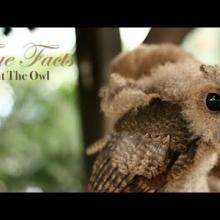

Join BirdNote tomorrow, November 30th!
Illustrator David Sibley and actor H. Jon Benjamin will face off in the bird illustration battle of the century during BirdNote's Year-end Celebration and Auction!
New Yorkers may think they hear owls hooting outside their apartment windows, but it’s more likely the coo of a Mourning Dove. There are owls in the city, but they prefer to live in more secluded areas, like Jamaica Bay in South Queens. Don Riepe has been building and installing nest boxes there for 30 years, and it’s paid off. Jamaica Bay now has the largest population of Barn Owls in New York State.
BirdNote®
Barn Owls in the Big Apple
Written by Monique LaBorde and Martha Isaacs
In New York City, people might think they’re hearing owls.
[Mourning Dove ML152568011]
But they're not. That soft hooting sound is almost always a Mourning Dove.
But the city does host owls -- they just prefer to live in more secluded areas, like Jamaica Bay in South Queens, New York’s most diverse bird area.
Don Riepe: I’m thinking this is the spot here.
Don Riepe is 80 years old, and he’s Jamaica Bay’s official guardian. From his motorboat, he eyes the marshy oasis, speckled with remote dredge islands, and points to one that we’re approaching.
Riepe: It’s basically a secluded island in the middle of Jamaica Bay. There are no predators on this island except possibly some racoons.
Which makes it a perfect spot for owls to roost. For three decades, Riebe’s been building and installing Barn Owl boxes here.
Riepe: So you can see, that box is half filled with pellets. They’ve been using that box for years.
This is one of Riepe’s rare visits to check up on the boxes. He peers in ...
<Barn Owl hiss>
… and is rewarded with a view of five fuzzy owlets, hissing back at him.
<Barn Owl hiss>
Riepe’s work has paid off. He says Jamaica Bay now boasts New York State’s largest number of Barn Owls, which makes a big difference to the diminished population.
Riepe: About 70% of owls and raptors in general don’t make it to year two. It’s a very tough world for them.
Which is why Riepe keeps coming back year after year, to give these owls whatever help he can. Though most of the time, that means simply leaving them alone.
For BirdNote, I’m Martha Isaacs.
###
Producer: John Kessler
Production Manager: Allison Wilson
Editor: Ari Daniel
Producer: Mark Bramhill
Associate Producer: Ellen Blackstone
Field recordings including owlet hiss sound by Monique LaBorde
Mourning Dove sound provided by The Macaulay Library of Natural Sounds at the Cornell Lab of Ornithology, Ithaca, New York. Recorded by David W Foster ML152568011
© 2020 BirdNote November 2020 Narrator: Martha Isaacs
ID# BNOW-03-2020-11-19 BNOW-03









